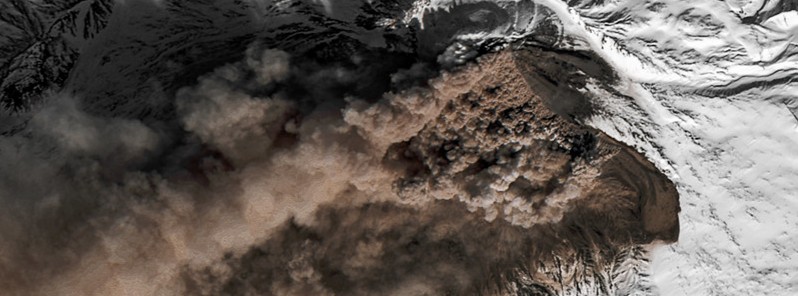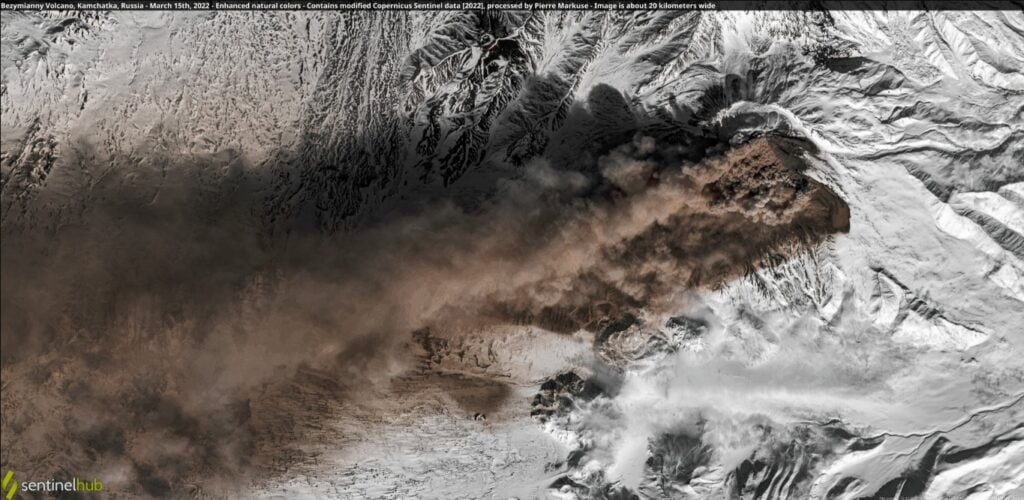Explosive eruption at Bezymianny volcano, Kamchatka, Russia

Volcanic activity at Bezymianny volcano increased on March 14, 2022, with new viscous lava flowing out of the dome. This activity was accompanied by small pyroclastic flows, rising dense ash plumes up to 4.5 km (14 750 feet) a.s.l.
According to the Tokyo VAAC and KVERT, a small ash cloud formed at 15:10 UTC on March 14, after which KVERT warned that an explosive volcanic eruption is possible with the ash up to 15 km (49 000 feet) above sea level, pyroclastic flows and the spread of an ash cloud hundreds of kilometers from the volcano during next several days.1
A gas-steam plume with some amount of ash extended about 90 km (55 miles) to the W of the volcano at 22:00 UTC. By 04:20 UTC on March 15, the cloud was extending about 120 km (75 miles) W of the volcano.

Bezymianny volcano eruption on March 15, 2022. Credit: Copernicus EU/Sentinel-2, Pierre Markuse
An explosive eruption of the volcano continues, KVERT said early morning March 15 and warned that ash explosions up to 10 – 15 km (32 800 – 49 200 feet) a.s.l. could occur during the next several days.2
Ongoing activity could affect international and low-flying aircraft, it added.





Geological summary
Prior to its noted 1955 – 56 eruption, Bezymianny had been considered extinct. The modern volcano, much smaller in size than its massive neighbors Kamen and Kliuchevskoi, was formed about 4 700 years ago over a late-Pleistocene lava-dome complex and an ancestral edifice built about 11 000 – 7 000 years ago.
Three periods of intensified activity have occurred during the past 3 000 years.
The latest period, which was preceded by a 1 000-year quiescence, began with the dramatic 1955/56 eruption. This eruption, similar to that of St. Helens in 1980, produced a large horseshoe-shaped crater that was formed by the collapse of the summit and an associated lateral blast.
Subsequent episodic but ongoing lava-dome growth, accompanied by intermittent explosive activity and pyroclastic flows, has largely filled the 1956 crater.3
References:
1 VONA/KVERT Information Release, March 14, 2022. KVERT, Institute of Volcanology and Seismology FEB RAS.
2 VONA/KVERT Information Release, March 15, 2022. KVERT, Institute of Volcanology and Seismology FEB RAS.
3 Bezymianny – Geological summary – GVP
Featured image credit: Copernicus EU/Sentinel-2, Pierre Markuse. Acquired on March 15, 2022

Commenting rules and guidelines
We value the thoughts and opinions of our readers and welcome healthy discussions on our website. In order to maintain a respectful and positive community, we ask that all commenters follow these rules.